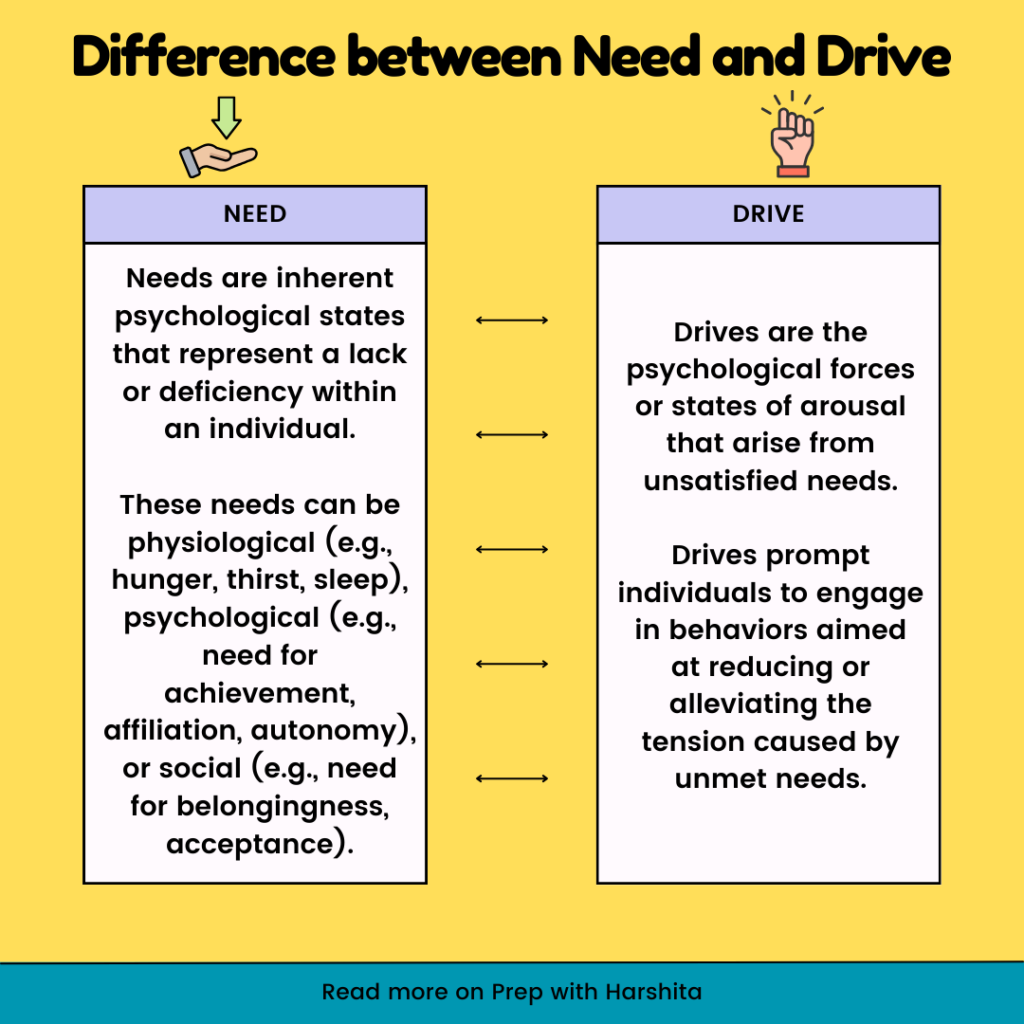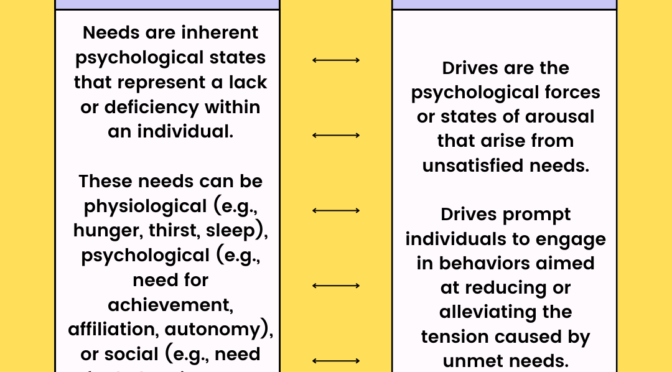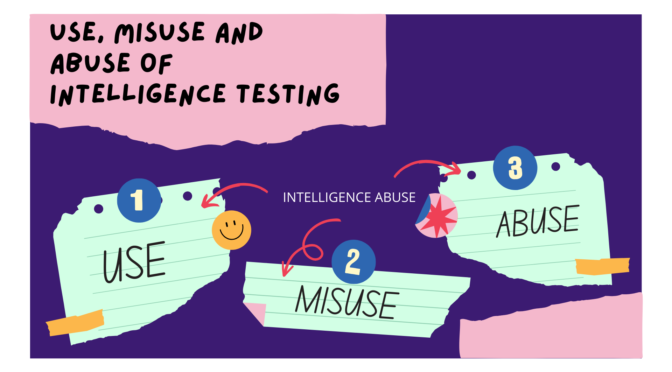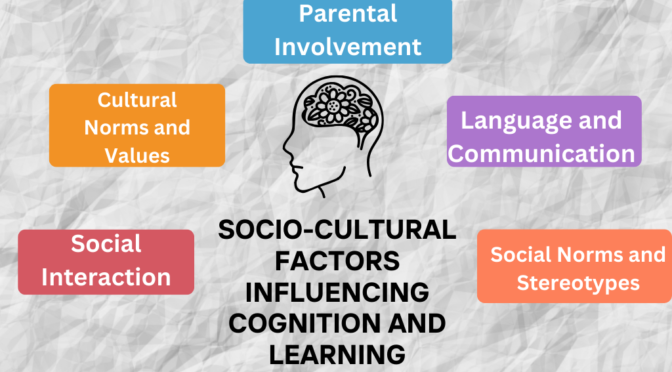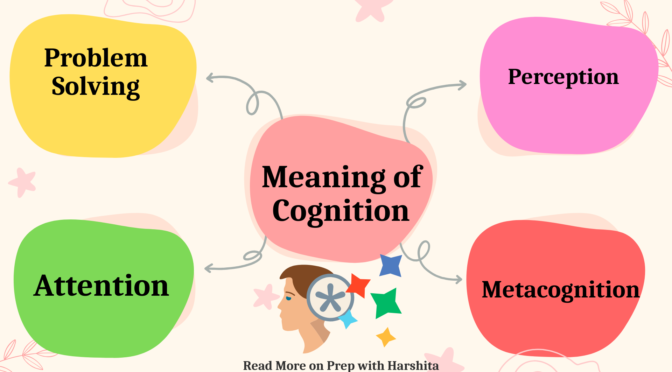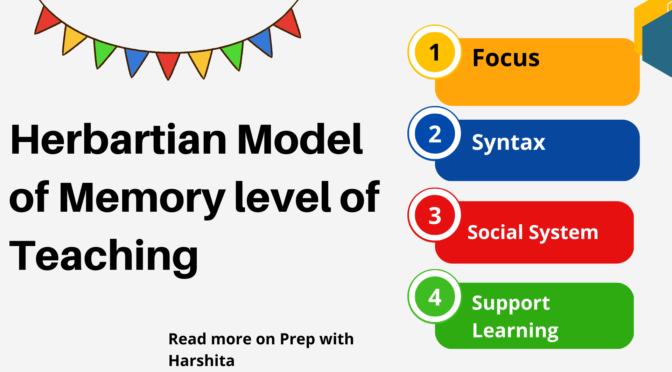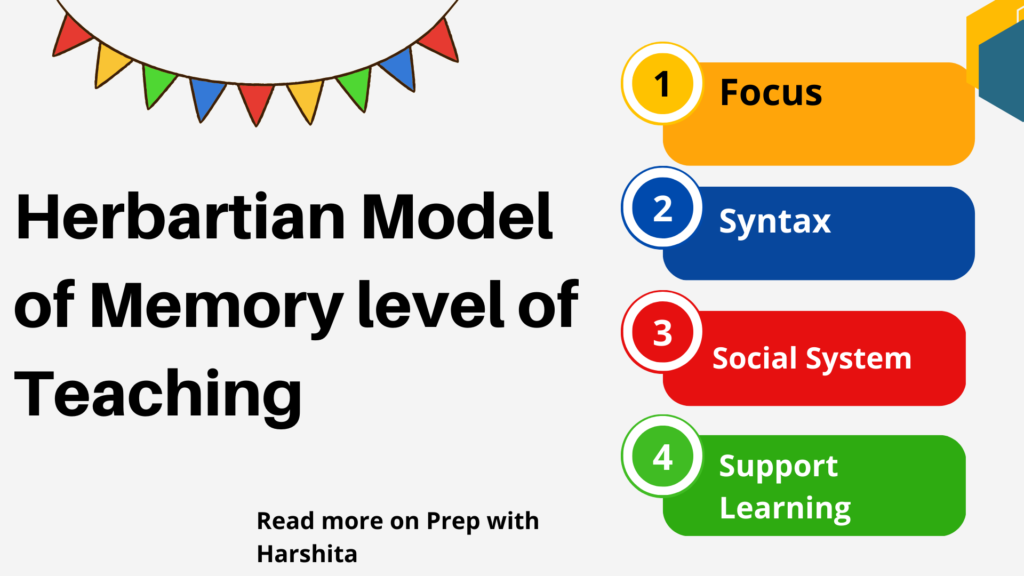In the context of motivation, “need” and “drive” are related concepts but have distinct meanings:
Need:
- Needs are inherent psychological states that represent a lack or deficiency within an individual.
- These needs can be physiological (e.g., hunger, thirst, sleep), psychological (e.g., need for achievement, affiliation, autonomy), or social (e.g., need for belongingness, acceptance).
- Needs serve as the underlying motivators that make individuals take action to satisfy them. It also restores a state of equilibrium or fulfillment.
- According to prominent theories such as Abraham Maslow’s hierarchy of needs, human needs are organized hierarchically, with basic physiological needs forming the foundation and higher-level needs such as self-actualization emerging once lower-level needs are met.
Also Read : Emotional Intelligence (Ability Model)
Drive:
- Drives are the psychological forces or states of arousal that arise from unsatisfied needs.
- Drives prompt individuals to engage in behaviors aimed at reducing or alleviating the tension caused by unmet needs.
- Drives are often associated with physiological needs, such as hunger or thirst, but can also stem from psychological or social needs.
- The intensity of a drive typically corresponds to the urgency or importance of the underlying need.
- Drive theory, proposed by Clark Hull and others, tells that motivation is primarily driven by biological needs. Also, that behavior is aimed at reducing physiological arousal or achieving homeostasis.
In summary, needs represent the underlying deficiencies or states of lack within an individual, while drives are the psychological forces that emerge from unsatisfied needs and propel individuals to take action to fulfill those needs.
Also Visit: Prep with Harshita
